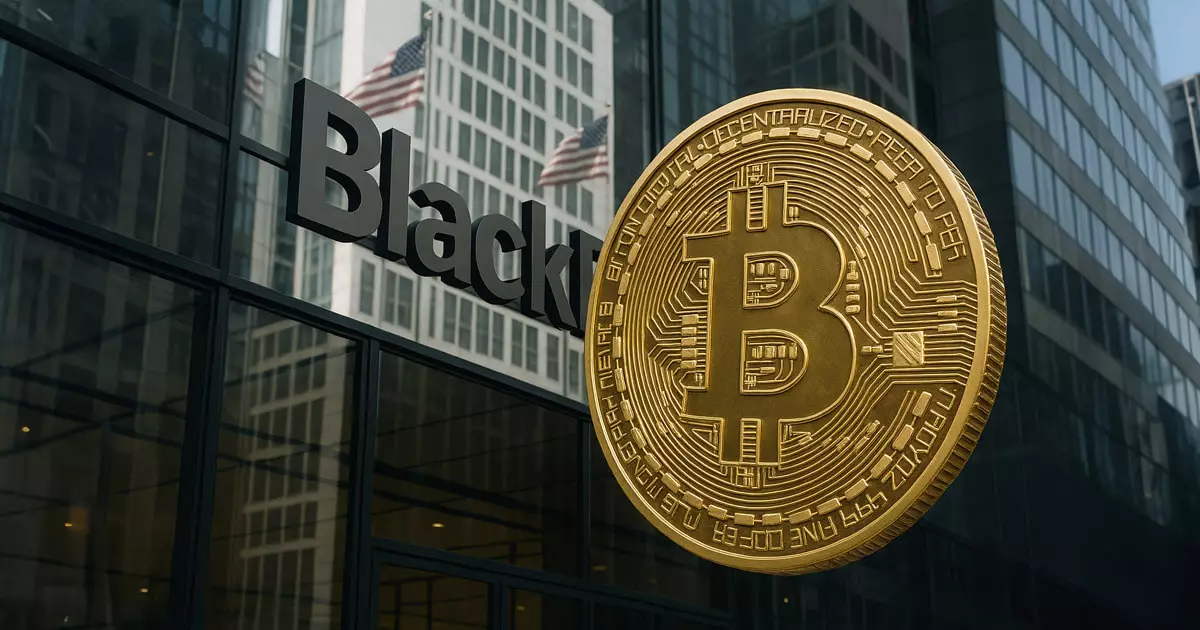The financial landscape is continuously evolving, and BlackRock is at the forefront of it with its groundbreaking approach to Bitcoin custodianship. The recent announcement of its partnership with Anchorage Digital Bank as an additional custodian for its iShares Bitcoin Trust (IBIT) is not just a strategic move; it’s a pivotal moment in the realm of digital asset management. Here’s a look at the implications of this dual-custodian model and why it could significantly alter the cryptocurrency investment landscape.
Strategic Dual Custodianship: A Blueprint for Resilience
BlackRock’s introduction of Anchorage as a secondary custodian marks a shift in how institutions view the management of digital assets. While Coinbase will continue to hold the primary responsibility, having Anchorage on board as a standby custodian provides a new layer of risk mitigation. This tiered approach is indicative of prudent risk management that reflects BlackRock’s understanding of a volatile market. The presence of dual custodians doesn’t simply add redundancy; it introduces a framework capable of adapting to unexpected challenges.
Moreover, this model conveys a powerful message to both regulated financial institutions and individual investors: custody management of digital assets can be as efficient and secure as traditional fiat custody. Investing in an asset like Bitcoin—which has historically been associated with regulatory gray areas—becomes less daunting for both institutional and retail investors when backed by the structural support of two trusted custodians.
Institutional Validation of Digital Assets
The fact that Anchorage is a federally chartered digital asset bank signifies a crucial step towards mainstream acceptance of cryptocurrencies. In a field where regulatory uncertainty looms large, the compliance standards set by the Office of the Comptroller of the Currency (OCC) become especially valuable. For BlackRock, partnering with a regulated entity as a custodian is not merely a formality; it is an assertion that digital assets can and should adhere to the same rigorous standards as traditional investments.
This partnership could ease concerns about the safety of Bitcoin holdings, thereby attracting more institutional investors into the fold. Regulatory compliance becomes a stepping stone rather than an obstacle, highlighting that digital assets are not some reckless gamble but legitimate financial instruments worthy of consideration.
Preparing for Future Growth
With IBIT already recognized as one of the leading Bitcoin ETFs in terms of inflows, the strategic addition of Anchorage hints at BlackRock’s expectations for significant growth in Bitcoin holdings within the trust. This anticipatory approach is simply smart business practice; the very act of fortifying its custodianship demonstrates confidence in the sustained interest and increasing adoption of Bitcoin as a central asset class.
This foresight is particularly critical when considering the erratic market dynamics of cryptocurrency. Sudden spikes in demand or regulatory changes could put acute pressure on custodial frameworks, and having a backup such as Anchorage clearly positions BlackRock not just as a participant, but as a champion for institutional confidence in the sector.
Enhancing Fiduciary Responsibility
The evolution of custodial practices illustrates a broader trend towards enhancing fiduciary responsibility. Especially in an environment where investor trust can be fragile, BlackRock’s multi-custodian strategy underscores a commitment to safeguarding assets against any potential risks—be they operational, regulatory, or technological. Indeed, this model can serve as a benchmark for other entities considering similar routes, transforming how custodianship is perceived in the digital asset world.
BlackRock’s decision reflects an industry-wide desire for diversification in custodial relationships. Just as traditional stock markets have multiple clearinghouses to ensure stability, the cryptocurrency sector can only benefit from a more structured approach to custodial frameworks. In many ways, this shift is about taking responsibility—not just for the assets themselves but also for the mechanisms that secure them.
The Road Ahead: Institutional Participation
As BlackRock positions IBIT to attract long-term institutional participation, its custodial strategy remains a cornerstone of the trust’s resilience and adaptability. The firm is establishing itself as a leader in receptive, scalable cryptocurrency solutions. While other asset managers may be hesitant due to the risks associated with digital assets, BlackRock’s assertive stance may prompt a newfound confidence across the board.
Investors are not merely looking for financial returns but seek reassurance in the soundness of their investment structures. BlackRock’s approach may set a precedent for how traditional finance evolves in partnership with digital currencies, ultimately shaping a more sophisticated investment landscape that embraces both innovation and trust.

